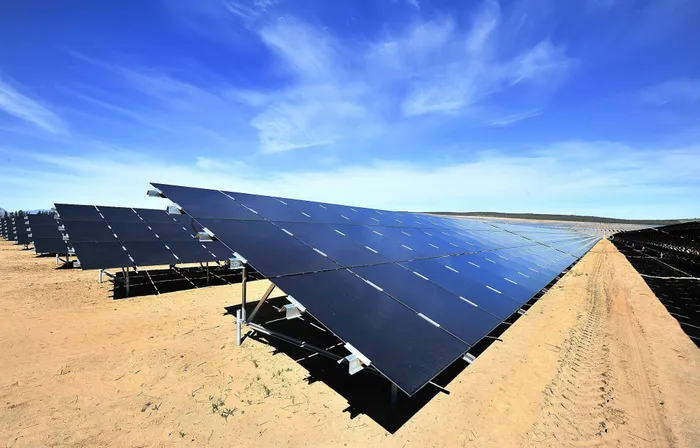SA on the cusp of major supply potential, but must act urgently to seize the day

South Africa, even with its grid capacity constraints, remains the most successful country on the continent for procuring renewable energy, says PwC. Picture Henk Kruger/Independent Newspapers
AFRICA, and specifically South Africa, needs to accelerate its vast potential of renewable energy to meet domestic energy market demands and deliver into international markets to fill the gap opened by Russia's reduced supply to Europe, but it needs to act urgently to seize this opportunity, according to PriceWaterHouseCoopers (PwC).
It said in its 2023 Africa Energy Review, released yesterday, that South Africa had the potential to be a hub for green hydrogen with Sasol having produced the first green hydrogen from Sasolburg in June 2023 and anticipated exporting 0.1mtpa (metric tons per annum) with green corridors potential identified in areas including Mpumalanga and in the Northern Cape.
PwC said the country and continent offered a wide range of energy sources and could both act as a supplier and consumer of fossil fuels while increasing clean energy and electricity supply for its population, but needed to move faster to do so.
Pedro Omontuemhen, PwC’s Africa oil and gas leader, said: “The solution for the power sector is not an either/or, renewables or natural gas, proposition. It requires a multipronged approach to decarbonisation with renewables and natural gas power at its core.”
South Africa, even with its grid capacity constraints, remains the most successful country on the continent for procuring renewable energy.
However, the success of executing and delivering renewable power from the Renewable Independent Power Producer Programme and Independent Power Producers had not been without some prolonged agony with legislation that was old and outdated and did not support private access to the grid, a lack of investment into the transmission grid and Eskom’s unwillingness to sign power purchase, the report noted.
PwC noted that TotalEnergies’ main goal to export the gas into international markets was thwarted by a cul-de-sac in discussions with PetroSA and other government institutions with issues over gas pricing and its escalation method still being discussed.
"A gas sales agreement still remains a distant dream with the cogs of government moving slowly. Gas-to-power, if located in the right place, would allow South Africa to utilise some of the spare grid capacity as it can act as a baseload and, unlike renewables, can be managed and does not pose a risk of variable heat loads and potential damage to the transmission network," PwC said.
The driving force is the need to replace the ageing and under-performing coal fleet, which faces scheduled decommissioning.
PwC suggested a collaboration model that required a vision and system based strategy that was defined by regional and national requirements and includes a clear focus on execution.
Collaboration was required across Africa to continue to increase power generated while Southern Africa needed to reverse the trend of reducing output.
"The liberation of the South African generation market has taken a long time to start and a type of collaborative privatisation of the utility sectors in power is required," PwC said.
It was noted that South Africa’s fuel mix would remain dirtier for longer as cleaner fuels – the introduction of a 10ppm (parts per million) sulphur content cap and 1% benzene limit on petrol – had been delayed by four years to July 2027, after being gazetted in September.
This as the government aims to persuade Natref to extend its refinery operations and not close as per Saprep (Shell/BP) and Enref (Engen), which have closed in the past few years.
The report said the 2019 Integrated Resource Plan (IRP 2019) was driven by Eskom and – with the energy transition and South Africa’s pledge to reduce emissions from 420 to 350 MtCO2e by 2030, a 17% decrease, changing technologies and the levelised cost of electricity of new technologies decreasing – the plan needed to be updated to meet the current environment.
The most effective way of getting power into the grid was by opening up grid access and procuring power through a flexible competitive market. Uninterrupted universal access to electricity, cost reflective fair tariffs and legislation were key elements to economic growth and future sustainability, the report noted.
BUSINESS REPORT